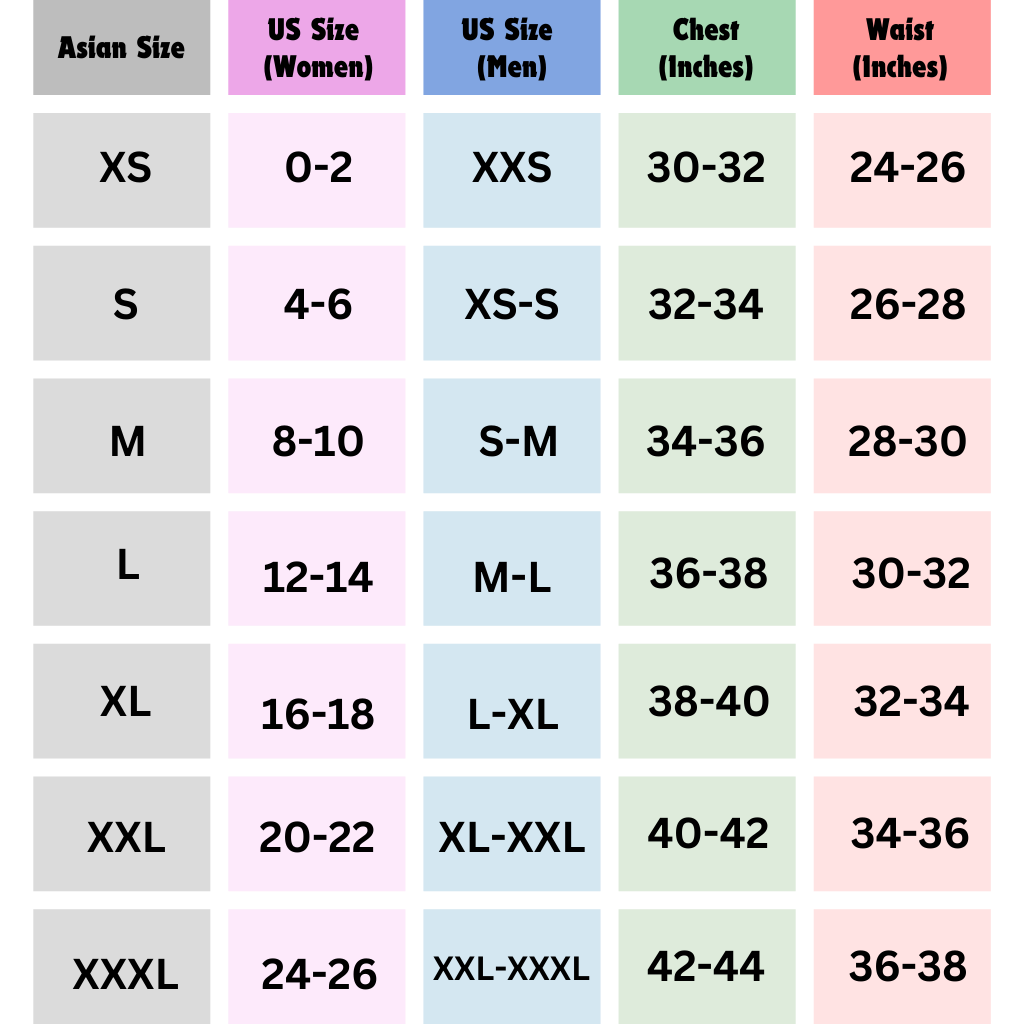Convert Asian Sizes to Perfect US Fit!
Result will appear here
Size Conversion Chart

Guide to Convert from Asian Sizes to US Sizes
When shopping for clothing online from Asian countries, you might notice that the sizes often run smaller than their US counterparts. This is due to different body measurement standards between regions. Below is a guide to help you convert Asian sizes to US sizes, ensuring you pick the right fit.
Asian Sizes Run Smaller: Asian sizes (especially from countries like China, Japan, and Korea) are often 1-2 sizes smaller than US sizes. For example, if you wear a medium (M) in the US, you may need to order a large (L) or extra-large (XL) in Asian sizing.
To find the correct size, measure the following areas of your body:
- Chest/Bust: Measure around the fullest part of your chest.
- Waist: Measure around the narrowest part of your waist.
- Hips: Measure around the fullest part of your hips.
- Shoulders: Measure from shoulder to shoulder.
Once you have your measurements, compare them to size charts from the retailer.
Like the one above ^
- Many Asian brands provide size charts that include body measurements in centimeters or inches.
- Convert your measurements to centimeters if needed, and compare them to the size chart for accuracy.
- China: Chinese sizes tend to be the smallest compared to US sizes.
- Japan: Japanese sizes can be one to two sizes smaller than US sizes.
- Korea: Korean clothing sizes also tend to run small, especially in women’s clothing.
- Footwear: Asian shoe sizes differ as well. A common rule of thumb is to go up 1-2 sizes when ordering shoes from Asian retailers. For example, if you wear a US size 9, you might need to order an Asian size 40-41.
- Men’s vs. Women’s Sizes: Men’s sizes in Asia generally follow a similar pattern of being smaller than US sizes, so it’s advisable to size up.
- Fit: Keep in mind that clothing from Asian countries may also have a slimmer fit overall, especially around the shoulders and hips.
- Read Reviews: Customer reviews can offer valuable insights into sizing. Look for comments about whether the item runs small, true to size, or large.
- Know Your Measurements: Always have your latest body measurements on hand, especially if you plan to shop online frequently.
- Consider the Fabric: Some fabrics like cotton may shrink after washing, so consider sizing up for these materials.